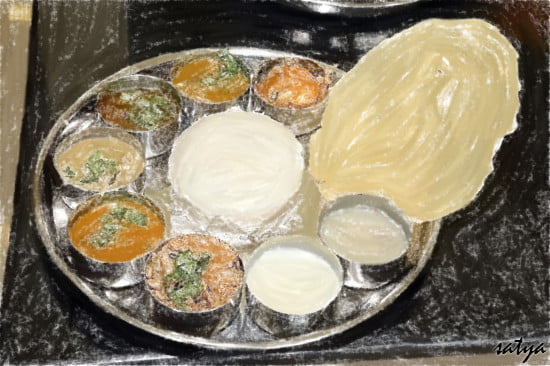There’s No Set Rule For Food Portioning, We Have To Ensure It Ourselves

In Odisha we define our hospitality and serving by “khaiba kam na hehu”. This is always conveyed to the caterers, along with haggling about the cost per plate.
Food Business Operators (FBO) are currently in the whirlpool with so many uncertainties, especially as everything is online now. Food cost has been rising, leading to shrinking profits. A rise of cost by 1 per cent is hitting the FBOs. The food aggregators are taking away the cherry along with some cream.
Thus, all FBOs are trying to keep wastage and spillage to less than 5 per cent to keep the figures above the red line. They are concentrating on portioning and quantity. Portion sizing and quantity is well known to the chefs and is very scientific. This is standardized across the entire restaurant fraternity and is normally done after observing the consumption pattern, wherein the chefs or restaurants try to have a win-win situation by not losing on profit and making the customer unhappy.
Some of the standard portion sizes are — starters 200g of meat with bone, 180g of boneless meat (or about 5 tikkas), 160g of boneless fish, prawns, 120-140g of paneer. For mains, a big bowl of rice and noodles (which is a sharing portion for 2-3 persons) is around 250-300g; a peda of roti is 50g and even the garnish has a thumb rule of 50g.
Indian and pan Asian food served are around 500 or 600g, for the entire meal with bread, dessert per person. The thali system has a thumb rule of 60g of dal or sabji per katori, and this works out the same.
Then comes fine dining and thematic restaurants, where the bill can touch the sky. Remember they are selling an experience which is why it is costly, but they also break down the total meal within 500-600g. In some of the restaurants, the chef wants to feed you less because of the ingredient cost, and thus they tweak with some secret ingredients which makes one feel satiated after the meal.
The Indian restaurants are much behind the US, Australian and even Korean restaurants when it comes to portioning — their serving portion is more than 300g for steaks and more than 500g for a bowl of rice, noodles and pasta.
Thus why do some restaurants or food joints charge more than the others? It is just that they cumulate the monthly expenses, carry out the calculation and consumption pattern and try to absorb the spillage and wastage cost.

For portioning and standardization, we don’t have any set rule in the country. Nobody is clear under whose purview it comes — FSSAI or Weights and Measures.
To have value for money, one can keep the following points in mind while going to a food joint or ordering food online:
A) Select a restaurant which has a standard recipe — this reflects that the joint has set instructions to prepare and present the dish. If the food joints change the menu quite often, it is guaranteed the challenge is there in the kitchen.
B) Avoid food joints where they do fancy plating. The value for money will be less and it will be quite disheartening. Just go regularly and order the same food, you’ll find the taste consistency will not be there.
C) If at anytime one comes across the big meat portion in a dish or combo dish – one chicken leg piece with thigh — be sure the process for making the dish is not standardized and taste consistency will not be satisfactory. For example in biryani, the rice proportion is usually 1:1, thus one meat piece on average should be around 75 to 80g. Anything bigger than the process or dish is questionable. Thus biryani connoisseurs have their own marked out joints and it is true also for the Momo eaters.
Foodies should experiment. Try to identify outlets which satisfy palate and value for money when it comes to any particular cuisine or dish. If you are a regular, have an intro and be friendly with the chefs and they can help you choose the best dish wherein you are satisfied in all aspects.

Comments are closed.